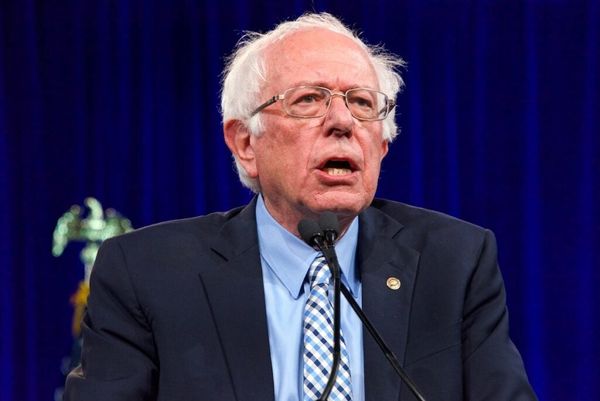
The dollar index (DXY00) on Thursday fell to a 2-1/2 week low and finished down -0.04%. Thursday’s rally in the S&P 500 to a new record high reduced liquidity demand for the dollar. Losses in the dollar were limited by signs of strength in the U.S. economy after weekly U.S. jobless claims unexpectedly fell to a 5-week low, and the Feb S&P manufacturing PMI expanded at the strongest pace in 17 months.
U.S. weekly initial unemployment claims unexpectedly fell -12,000 to a 5-week low of 201,000, showing a stronger labor market than expectations of an increase to 216,000.
The U.S. Jan Chicago Fed national activity index fell -0.32 to -0.30, weaker than expectations of -0.21.
The U.S. Feb S&P manufacturing PMI rose +0.8 to a 17-month high of 51.5, stronger than expectations of no change at 50.7.
U.S. Jan existing home sales rose +3.1% to a 5-month high of 4.00 million, stronger than expectations of 3.97 million.
Hawkish comments Thursday from Fed Vice Chair Jefferson were bullish for the dollar when he said we need a "body of evidence" from the economy to support rate cuts. He added that the Fed needs to be on guard against cutting interest rates too far in response to falling inflation as "excessive easing can lead to a stalling or reversal in progress in restoring price stability."
The markets are discounting the chances for a -25 bp rate cut at 6% for the March 19-20 FOMC meeting and 29% for the following meeting on April 30-May 1.
EUR/USD (^EURUSD) on Thursday climbed to a 2-1/2 week high and finished up +0.02%. The euro found support Thursday on Eurozone economic news that showed as-expected Jan consumer prices and a jump in the Eurozone Feb S&P composite PMI to an 8-month high. Also, the account of the Jan 30-31 ECB meeting was hawkish and supportive of the euro.
The upside in the euro was limited after the dollar recovered most of its losses on strong U.S. economic news. Also weighing on the euro was Thursday’s news that the Eurozone Feb S&P manufacturing PMI unexpectedly declined.
Eurozone Jan CPI eased to +2.8% y/y from +2.9% y/y in Dec, right on expectations. Jan core CPI of +3.3% y/y was unchanged from Dec, right on expectations.
The Eurozone Feb S&P manufacturing PMI unexpectedly fell -0.5 to 46.1, weaker than expectations of an increase to 47.0.
The Eurozone Feb S&P composite PMI rose +1.0 to an 8-month high of 48.9, stronger than expectations of 48.4.
The account of the ECB's Jan 24-25 policy meeting was hawkish as policymakers stated that the risk of cutting interest rates too early was seen as a bigger danger than cutting too late.
Swaps are pricing in the chances for a -25 bp rate cut by the ECB at 3% for its next meeting on March 7 and 29% for the following meeting on April 11.
USD/JPY (^USDJPY) on Thursday rose by +0.15%. The yen on Thursday fell to a 1-week low against the dollar. Higher T-note yields Thursday pressured the yen. The yen was also weighed down by weakness in Japanese manufacturing activity that was dovish for BOJ policy after the Japan Feb Jibun Bank manufacturing PMI fell to a 3-1/2 year low. Finally, Thursday’s rally in the Nikkei Stock Index to a record high curbed safe-haven demand for the yen.
The Japan Feb Jibun Bank manufacturing PMI fell -0.8 to a 3-1/2 year low of 47.2.
Swaps are pricing in the chances for a +10 bp rate increase by the BOJ at 29% for its next meeting on March 19 and 78% for the following meeting on April 26.
April gold (GCJ4) on Thursday closed down -3.60 (-0.18%), and Mar silver (SIH24) closed down -0.090 (-0.39%). Precious metals on Thursday gave up an early advance and turned lower, with gold falling back from a 1-week high. Precious metals were under pressure after Thursday’s better-than-expected U.S. economic reports that were hawkish for Fed policy. Also, Thursday's sharp rally in global equity markets reduced the safe-haven demand for precious metals.
On the positive side, the ongoing geopolitical risks in the Middle East and Ukraine have boosted safe-haven demand for precious metals. Silver also garnered support Thursday after the U.S. Jan existing home sales rose +3.1% to a 5-month high, and the Feb S&P manufacturing PMI rose to a 17-month high of 51.5, signaling strength in industrial metals demand.
On the date of publication, Rich Asplund did not have (either directly or indirectly) positions in any of the securities mentioned in this article. All information and data in this article is solely for informational purposes. For more information please view the Barchart Disclosure Policy here.






